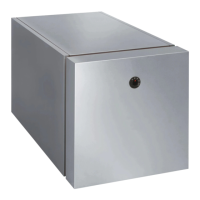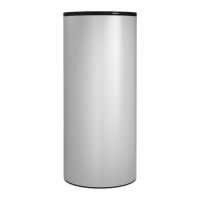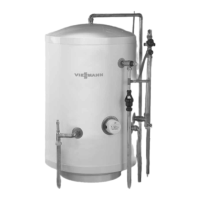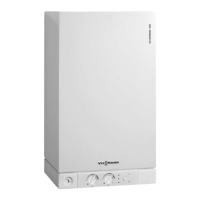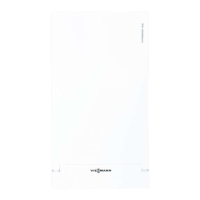4.1 Sizing according to peak draw-off rate and DIN 4708-2
Application
For residential buildings, the DHW demand is calculated based on
the demand factor N. The calculations are set out in DIN 4708-2 and
described below. Based on the demand factor N, a DHW cylinder
with a corresponding performance factor N
L
is then selected
(N
L
≥ N).
The performance factor N
L
of a DHW cylinder can also be expressed
as the peak output over 10 minutes. Systems for DHW heating are
sized according to this "peak draw-off rate" if a specific volume of
DHW has to be provided for a short period of time, after which a lon-
ger period of time is available to reheat the cylinder again. This may
occur, e.g. in commercial enterprises or schools (intermittent opera-
tion). The 10-minute peak output is determined almost exclusively by
the volume of water stored (cylinder capacity).
The performance factor N
L
and the maximum continuous output of
the DHW cylinders is given in the tables from page 8. For the
detailed specifications, performance characteristics and continuous
output diagrams, see the datasheet for the relevant DHW cylinder.
Calculation program EDIS/DIN 4708-2
DHW cylinders can also be sized with the aid of the EDIS calculation
program. The program sizes DHW cylinders on the basis of
DIN 4708 for residential units and includes various calculation pro-
cesses, e.g. for hotels, catering businesses, hospitals, retirement
homes, campsites, sports halls.
You can obtain the Viessmann "EDIS" calculation program by con-
tacting one of our sales offices.
Calculating the heat demand for DHW heating in residential buildings
This calculation is based on DIN 4708 "Central heat-water-installa-
tions" Part 2.
DIN 4708 is the basis for the standard calculation of the heat
demand for central DHW heating systems in residential buildings.
For the purposes of calculating the heat demand, a standard resi-
dential unit is defined as follows:
The standard residential unit is a dwelling based on statistical val-
ues, for which the demand factor N = 1 is as follows:
■ Room factor r = 4 rooms
■ Occupancy factor p = 3.5 people
■ Draw-off demand w
v
= 5820 Wh/draw-off volume for a bath
The following information is required to calculate the demand
a) All sanitary equipment on all floors, e.g. from the building design
drawing or details supplied by architect or client
b) Number of living spaces (number of rooms) without ancillary
rooms such as kitchen, hallway, bathroom and storage room,
e.g. from the building design drawing or details supplied by archi-
tect or client
c) Number of people per residential unit (occupancy factor).
If the number of occupants for each residential unit cannot be
ascertained, a statistical occupancy factor p can be calculated on
the basis of the room factor r for the residential unit concerned
using table 1.
Calculating the occupancy factor p
If the number of people per residential unit cannot be ascertained,
this table can be used to calculate the occupancy factor p.
Table 1
Room factor r Occupancy factor p
1.0
2.0
*1
1.5
2.0
*1
2.0
2.0
*1
2.5 2.3
3.0 2.7
3.5 3.1
4.0 3.5
4.5 3.9
5.0 4.3
5.5 4.6
6.0 5.0
6.5 5.4
7.0 5.6
Establishing the number of draw-off points to be taken into
account when calculating the demand
The number of draw-off points must be taken into account when cal-
culating the overall demand. This varies according to the specifica-
tions of the residential unit (basic or deluxe) and can be derived from
tables 2 or 3.
Table 2 – Residential unit with standard equipment level
Existing amenities per residential unit To be taken into account for calculating the demand
Room Equipment
Bathroom 1 bath 140 l (according to table 4, no. 1, on page 15)
or
1 shower cubicle with/without mixer tap and standard shower
head
1 bath 140 l (according to table 4, no. 1, on page 15)
1 washbasin Not taken into account
Kitchen 1 kitchen sink Not taken into account
*1
If the residential building concerned mainly comprises residential units with 1 and 2 main rooms, increase the occupancy factor p by a
factor of 0.5.
Sizing
14
VIESMANN
DHW heating
4
5414646
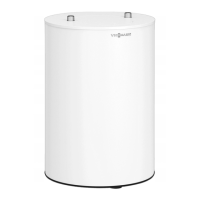
